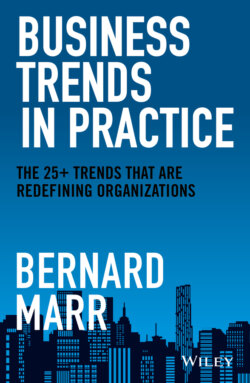Читать книгу Business Trends in Practice - Бернард Марр, Bernard Marr - Страница 21
Quantum computing
ОглавлениеTraditional computers may have grown exponentially more powerful over the last half-century, but they're basically still very fast versions of the humble electronic calculator. They're only capable of processing one “bit” of information at a time, in the form of a binary 1 or 0.
A quantum computer, on the other hand, uses “quantumbits” or “qubits” to process data, and these qubits seem to be capable of existing in two states simultaneously, meaning they have some likelihood of being a 1 and some likelihood of being a 0 at the same time. Using these quantum methods, it's possible to build machines capable of operating far more quickly than the fastest computers available today – potentially hundreds of millions of times faster. While quantum computers won't replace traditional computers (using a quantum computer to write your memoir, for example, would be like using a rocket launcher to crack a walnut), they could be used to complete new, previously impossible tasks that traditional computers aren't capable of. In other words, they're ideally suited to solving problems that humanity (and computers) hasn't yet been able to solve, such as the climate crisis. Some quantum computers exist today, but their use is mostly confined to academia and highly theoretical work. However, companies such as IBM, Google, and Microsoft are investing heavily in developing large-scale quantum computers that could see quantum computing deliver more widespread practical applications.
